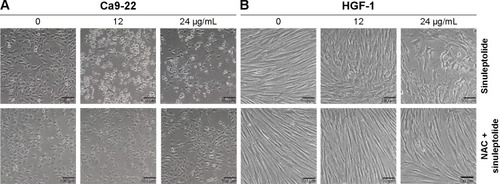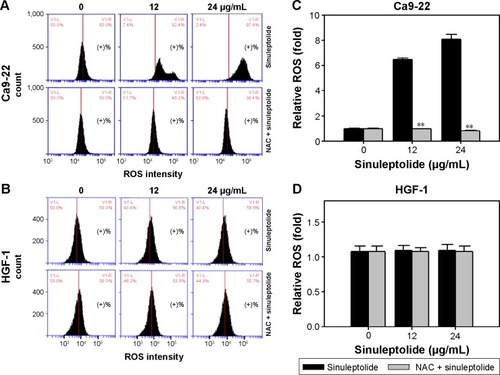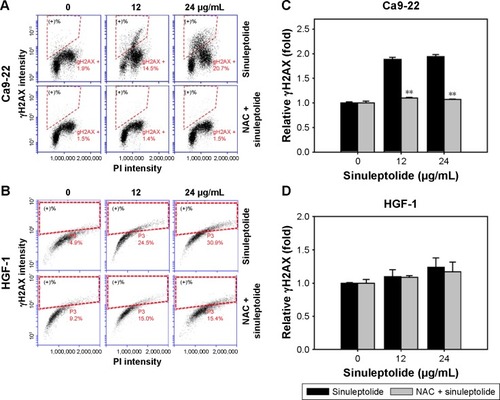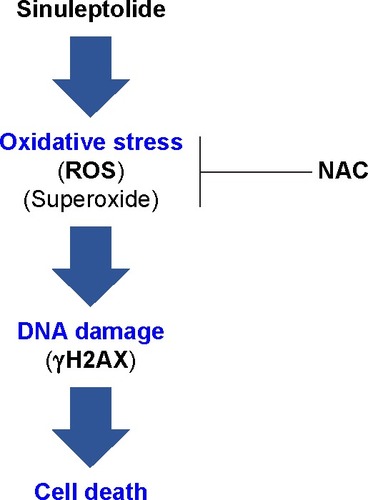Figures & data
Figure 1 NAC effect on cell viabilities of sinuleptolide-treated oral cancer and normal cells.
Abbreviation: NAC, N-acetylcysteine.

Figure 2 NAC effect on cell morphology of sinuleptolide-treated oral cancer and oral normal cells.
Abbreviation: NAC, N-acetylcysteine.

Figure 3 NAC effect on ROS generation of sinuleptolide-treated oral cancer cells and oral normal cells.
Abbreviations: NAC, N-acetylcysteine; ROS, reactive oxygen species.

Figure 4 NAC effect on mitochondrial (mt) superoxide generation of sinuleptolide-treated oral cancer cells.
Abbreviation: NAC, N-acetylcysteine.

Figure 5 NAC effect on γH2AX-based DNA damage in sinuleptolide-treated oral cancer and oral normal cells.
Abbreviations: NAC, N-acetylcysteine; PI, propidium iodide.

Figure 6 Overview of the hypothesized mechanism of sinuleptolide-induced killing of human oral cancer cells (Ca9-22) involving oxidative stress.
Abbreviations: NAC, N-acetylcysteine; ROS, reactive oxygen species.

